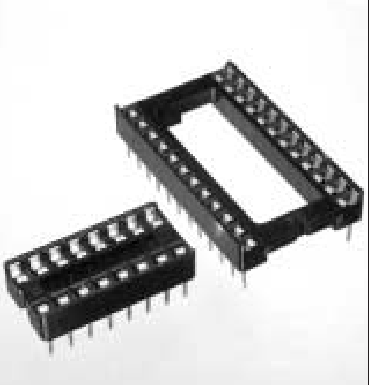Recently I switched from the leaf-spring type of DIP sockets to the more expensive machined MIL sockets. The leaf-spring type were failing (by the spring parts pulling out of the socket) after a few insertions, or maybe just over time), but the MIL types don't seem to hold the part securely. Notice how this one relaxes into a cockeyed position after having been pressed firmly into the socket:
Are the MIL sockets supposed to be used with some kind of a hold-down? Did I get an atypically bad batch of leaf-spring types, and is there a brand or supplier whose sockets can be counted on?
Update: Isn't the point of socketting to permit removal for replacement or, more frequently, for reprogramming (and if not, then why socket instead soldering the chip directly)? ZIF is a tool for the lab or assembly house, not a part to go on a product. It's bulky, heavy and expensive. Is there no kind of socket that's any better than having to unsolder a part?




